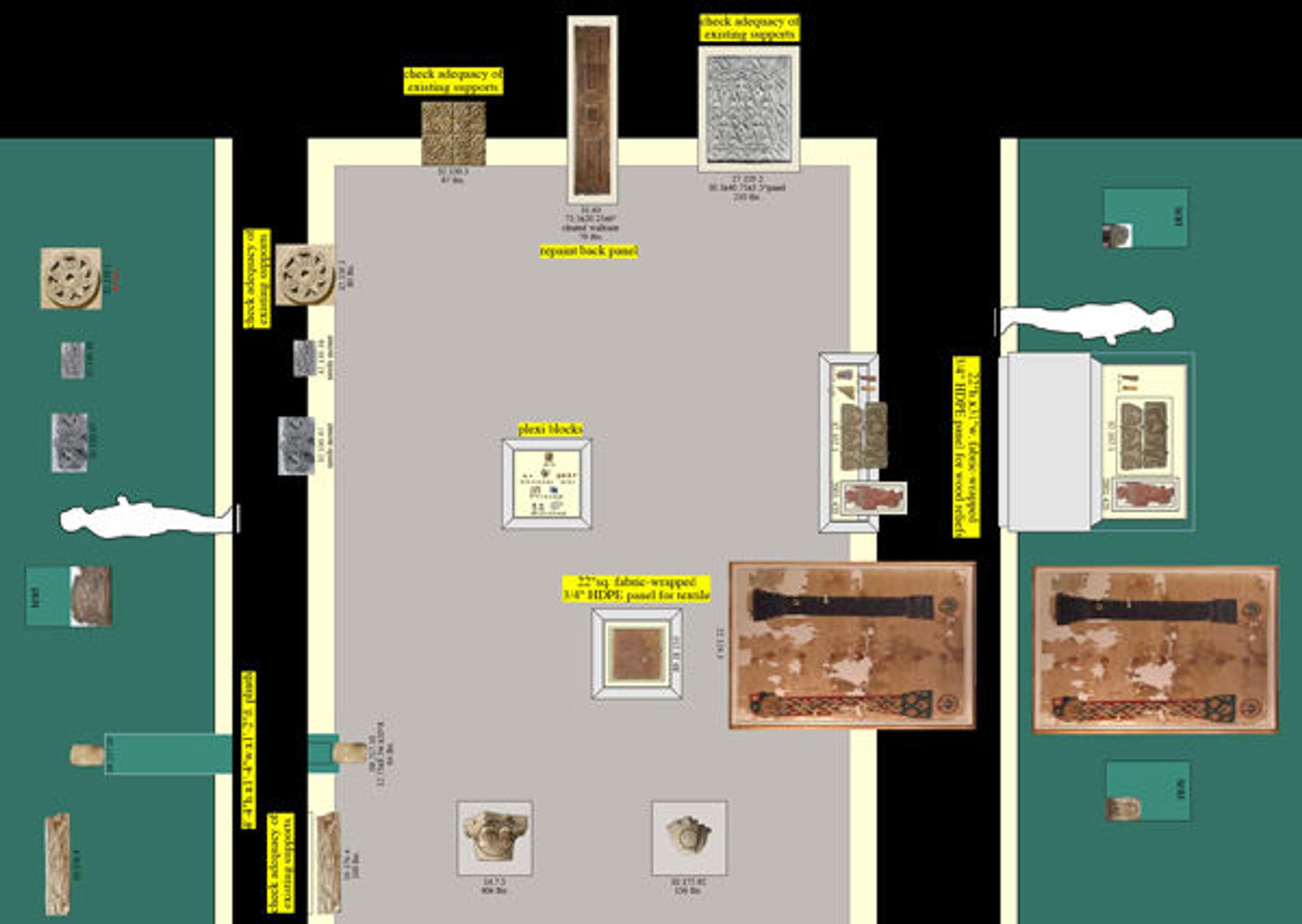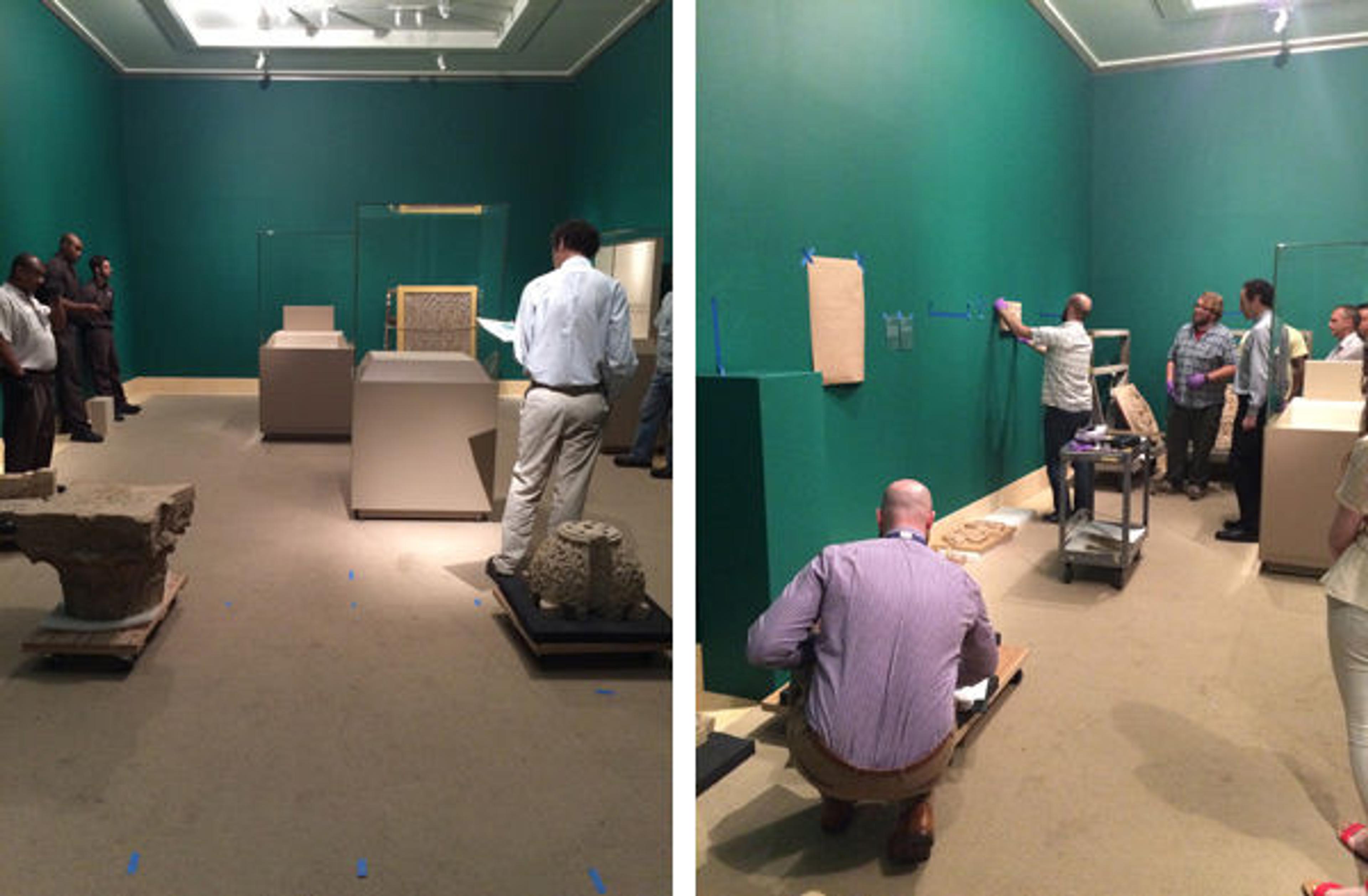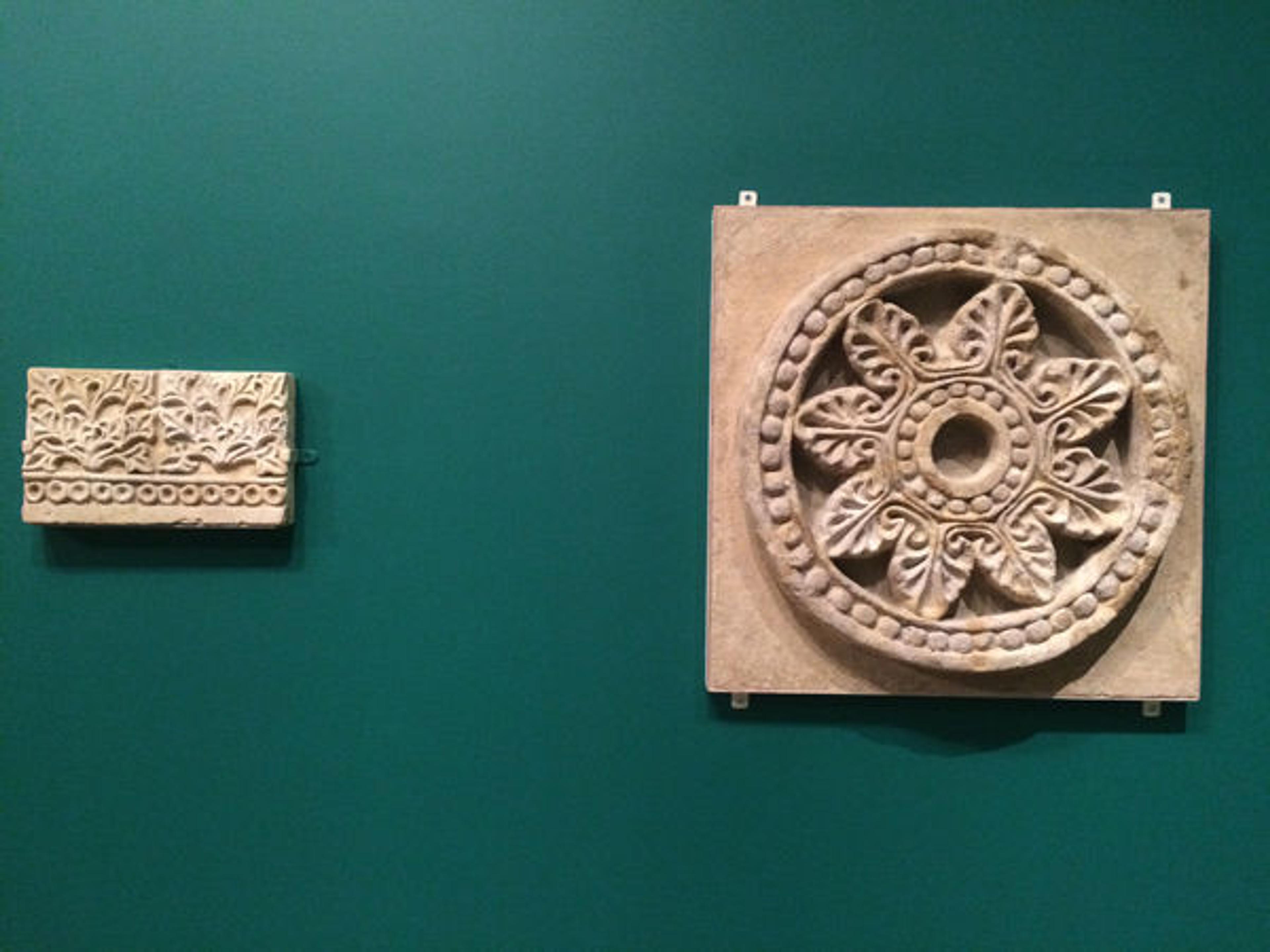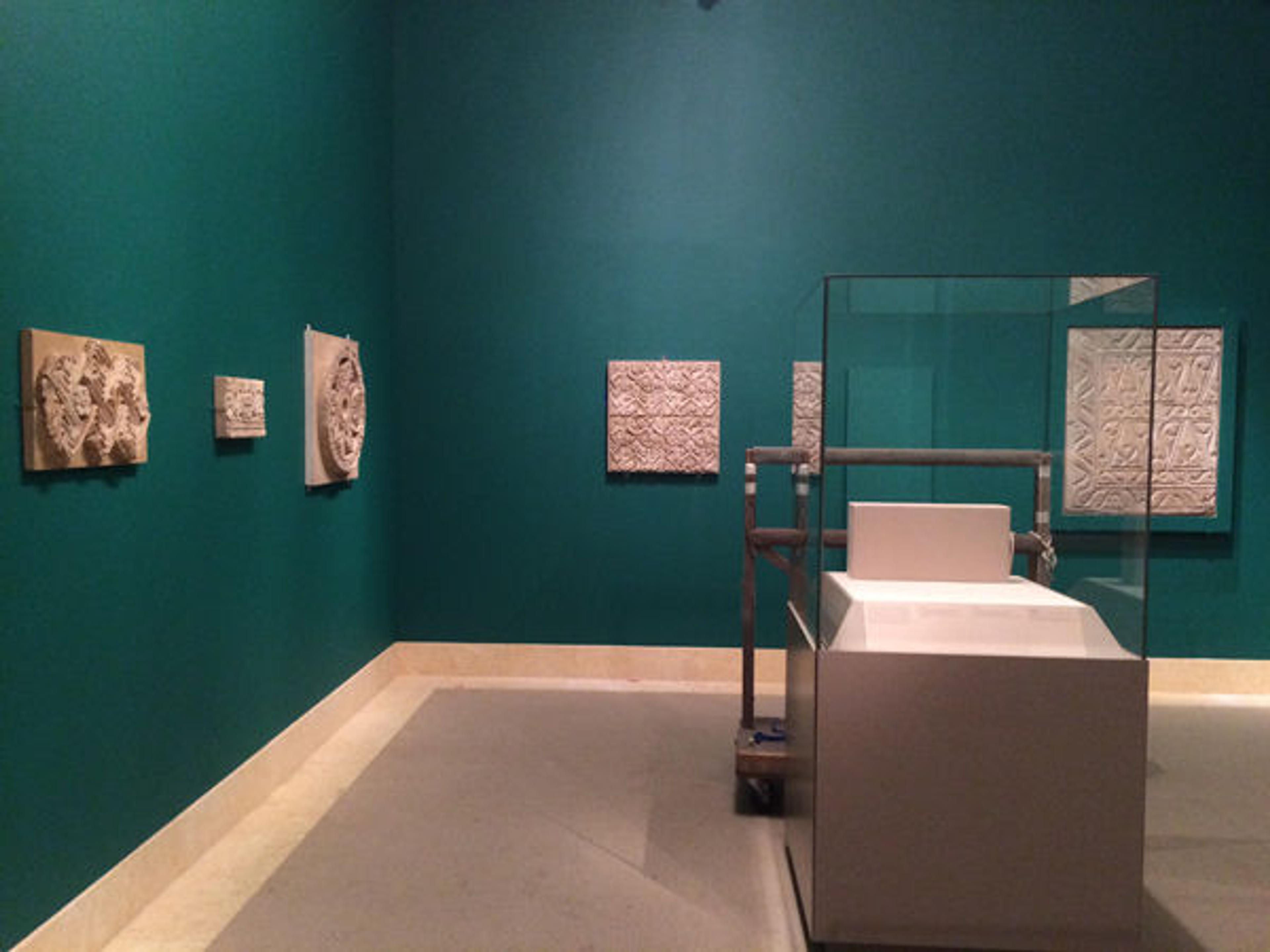
Detail view of the Design Department's floor plan for the exhibition Pattern, Color, Light: Architectural Ornament in the Near East (500–1000)
«As a recent college graduate and current summer intern in the Metropolitan Museum's Department of Islamic Art, the past weeks have flown by, filled with new and exciting experiences, projects, and opportunities. Among these, I have been fortunate enough to observe some of the curation and the full installation of the exhibition Pattern, Color, Light: Architectural Ornament in the Near East (500–1000), now on view through October 25 in The Hagop Kevorkian Fund Special Exhibitions Gallery (gallery 458). This exhibition highlights architectural ornament from Near Eastern monuments, which exist today in fragmented form from numerous walls, ceilings, and floors. These fragments and their stylistic motifs crossed rival empires and illuminate common aesthetic trends of the period from 500 to 1000 A.D. The Department of Islamic Art started working on this exhibition about nine months ago, but by witnessing the final step of the process—the installation—I have a new appreciation and understanding of what it takes to coordinate a production such as this.»
On the first day of installation, I quickly learned just how many people come together to work on these final steps. Because the larger wall pieces were being hung first, not only did this require the presence of curatorial staff, collections managers, and art handlers from both Islamic Art and the Department of Ancient Near Eastern Art, but also numerous staff from Design, the Machine Shop (who make and maintain all metal products in the Museum, including signage and the mounts used to hang the heavy pieces in this exhibition), and the Riggers team (who help lift all the heavy objects). By the time everyone had arrived, there were about eighteen people ready to contribute to the installation of a one-room exhibition. The group and setting were equal parts art gallery, construction site, and friendly social gathering. In a museum as large as the Met, I imagine that installations like this are treasured for the time they provide to interact face-to-face with colleagues not seen every day.

Staff from across the Museum work together on the exhibition's installation in gallery 458. All photos courtesy of the author
At this point the vibrant green walls of the gallery were unadorned, and I was getting excited to see everything start to go up for the show. Having no prior experience with exhibition design or installation, this process had always been mysterious and seemingly magical to me. What many people don't realize, however, is that meetings for exhibitions, even smaller ones like Pattern, Color, Light, begin almost a year in advance—often several years for loan exhibitions—of the show's opening. The curatorial staff meets and works with Design to meticulously arrange the art in a manner that is aesthetic and meaningful, yet practical. Other details like the wall color, the type of object mounts, and the last-minute rearranging of artifacts in their display cases are done with extremely careful and thoughtful consideration.
Despite all of the forethought and planning needed for a great exhibition like Pattern, Color, Light, I was pleasantly surprised to retain some sense of the magical quality of exhibition installation. Within a span of about three hours, the team managed to mount all of the stone and stucco wall pieces, some of which weighed over two hundred pounds. It was fascinating to watch the smooth coordination of five riggers help lift a massive stone relief, while three or four other team members quickly worked to align it with the Design team's careful measurements before screwing the mounts into the wall to secure the art. After the mounts were fixed into place, mount-makers went around and painted them to match the color of the wall. Strong attention to detail is necessary to produce an effective exhibition, and this commitment was evident in the hanging of pieces as well as the proper handling of the art at each step of the installation.

Once objects are mounted to the wall, the mounts are then painted to match the wall color of the gallery (left)
Seeing all of the different types of curatorial, design, and editorial tasks in addition to the physical creation of this exhibition has shown me the variability of the installation process and how extremely rewarding it is. The final product is a great look at different stylistic trends in the architectural ornament of the Byzantine, Sasanian, and early Islamic Near East, and is definitely worth a visit. The most remarkable part of this whole process, however, is that a team has already come together to begin work for the next exhibition in this gallery.

Installation view of gallery 458
Related Link
Pattern, Color, Light: Architectural Ornament in the Near East (500–1000), on view July 20, 2015–January 3, 2016